Museum DataArt. Man-machine: desktop computing to microcalculators

DataArt continues to expand the collection and talk about individual museum exhibits. In a previous article, it was about Soviet mice. This time, the focus is on arithmometers and computers - the production tools of specially trained calculators.
The introduction of computers lasted for several decades, the use of programmable machines at times seemed less convenient than the usual process, where calculations were performed by a specialist with an arithmometer. Computers were not only expensive, but also huge, they spent a lot of energy and required highly professional services: kilowatts and man-hours.
Nevertheless, the gradual transition to a new method of settlements in research institutes and design bureaus, in supply services and accounting departments of enterprises turned out to be a painful social process. A real revolution was taking place, because a whole army of calculators - neat and attentive specialists, who had been carrying out complicated mathematical operations for years in exhausting mode, was out of work.
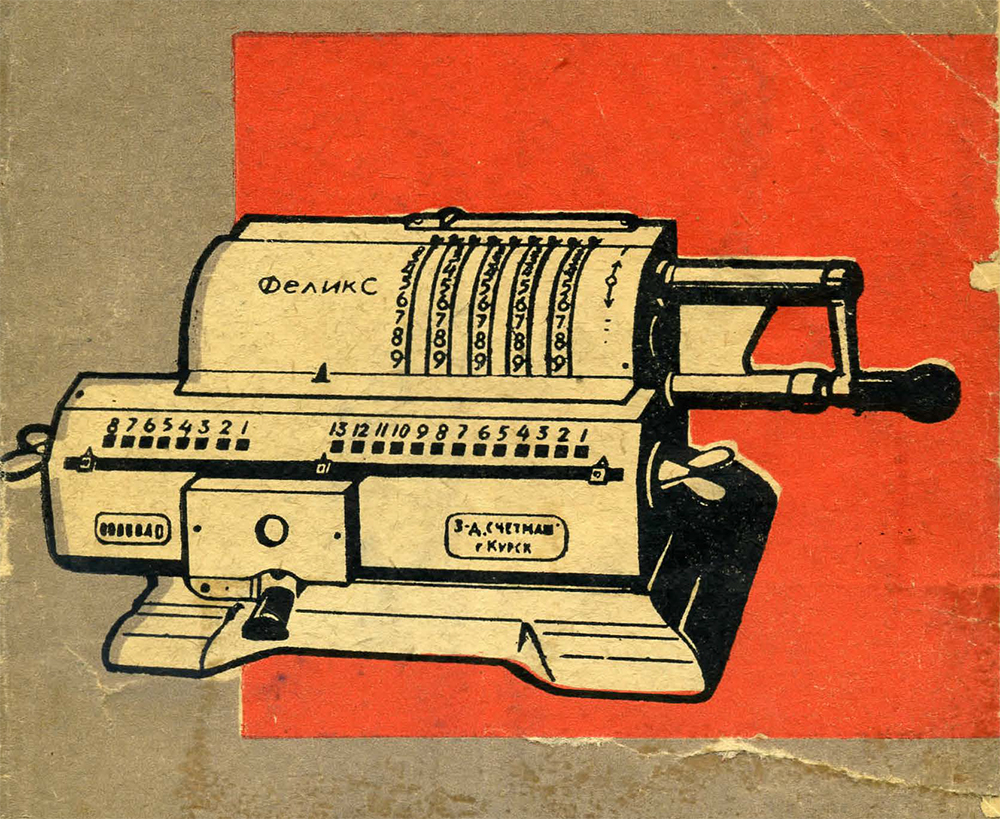
Arithmometer "Felix" from the cover of the operating instructions for the device
The main tools of people who came under attack, and previously occupied an important place in the Soviet economic system, were mechanical computers. In the USSR, these were, first of all, “Felixes” - arithmometers of the system of V. T. Odner . Data was entered into them using levers, and the actions were carried out by turning the special handle.
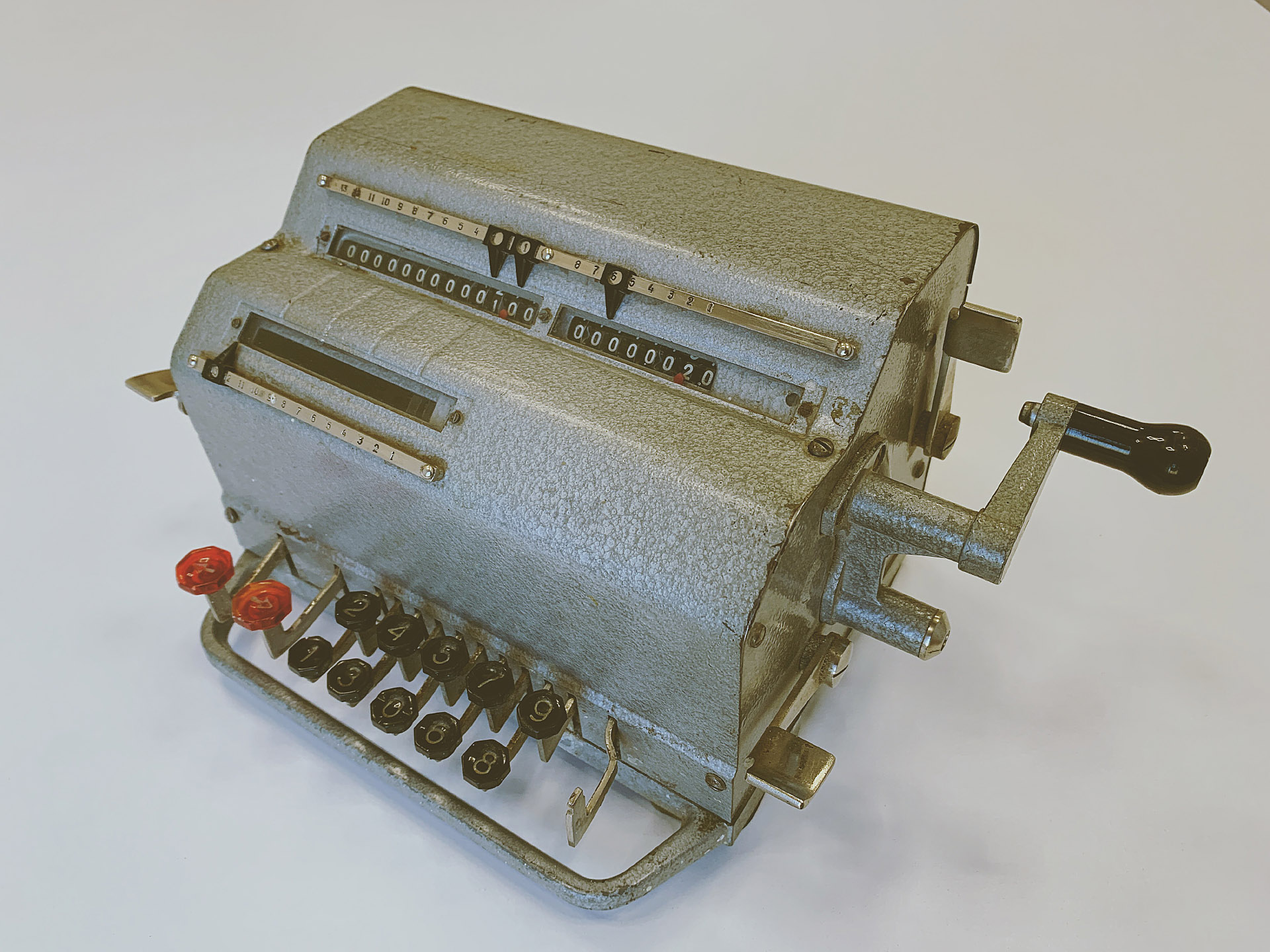
VK-1 device from the collection of the DataArt Museum, provided by Gleb Nitzman , the mastermind of the museum.
The production of such tools was established at several enterprises, but the largest were the Kursk and Penza factories “Accountmash”.

Kursk Schetmash was the leader in the production of Felix, Penza produced the second most popular and slightly more advanced arithmometer - VK-1 (computational keyboard). Moreover, he released them until the 1980s.
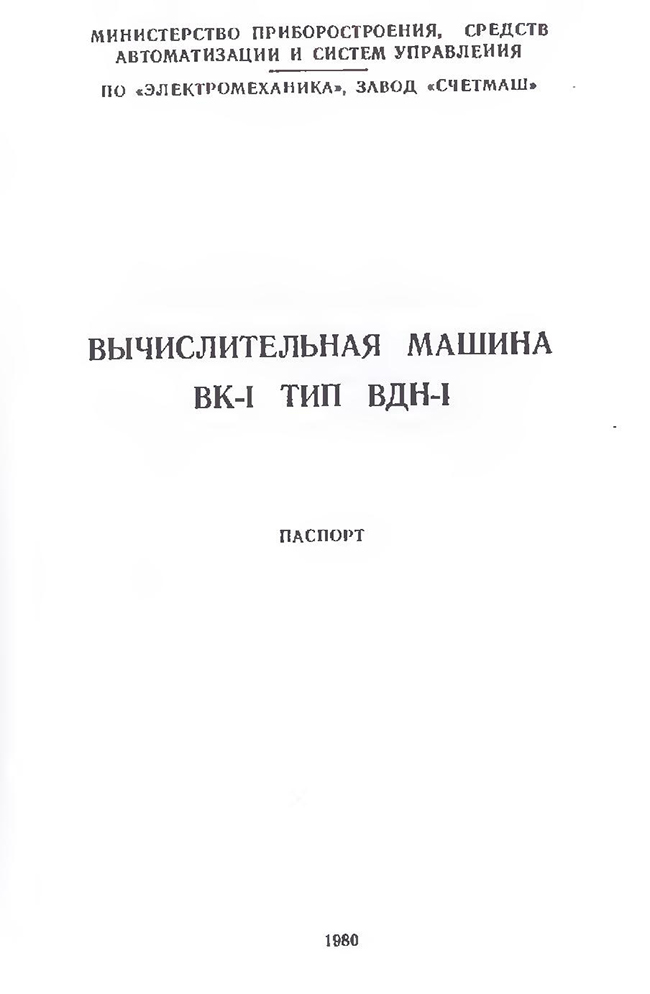
The passport for VK-1 on the site of collector Sergei Frolov is dated in fact in 1980.
The popularity of mechanical computers was determined by their availability: the Felix in the 1970s cost 13 rubles, the VK-1 keyboard was probably more expensive, but not by much. At the same time, the price of the first bulky calculators reached several hundred rubles, and they themselves caused less confidence, and they were able to do almost the same thing as a standard arithmometer.
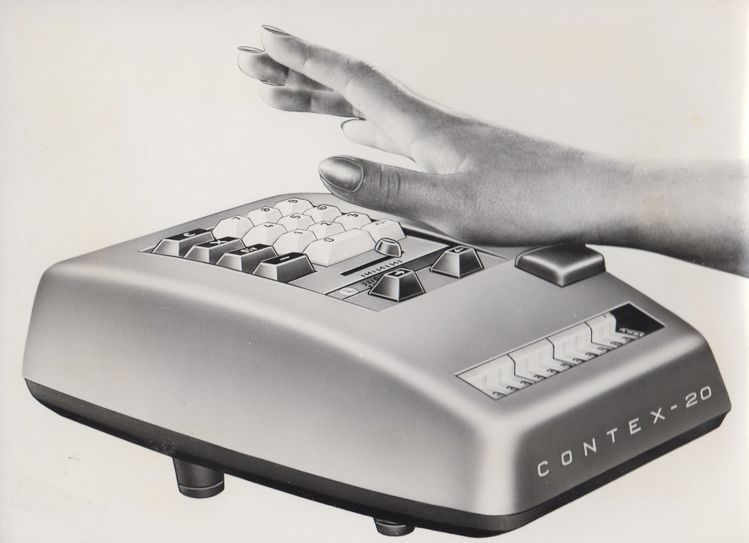
Contex-20. Scandinavian design and German build quality
Interestingly, for some time the line of electronic and mechanical computing devices developed in parallel. The use of electric drives and lighter and more affordable materials helped to support the demand for mechanics, which might seem archaic against the backdrop of fundamentally new computers. The Danish company Carlsen Bros went this way, having released in 1961 an updated version of its Contex-20 arithmometer. In 1963, he received the prize of the Hanover exhibition (he himself was produced in Hamburg) Die Gute Industrieform in the category of "product" as a brilliant example of industrial design.

The Bystritsa device, created on the basis of Contex-20, from the collection of the DataArt Museum. Provided and restored by Gleb Nietzman
This arithmometer was so loved in the USSR that they began to produce it under its own brand, Bystritsa. Unlike the Penza or Kursk “Accounts”, here the manufacturer did not indicate his full name or return address, limited to the logo.

Collector Sergei Frolov helped us recognize the Bystritsa manufacturer’s emblem.
Thanks to Sergey, we found out that these computers were manufactured at the Electromashinostroitelny Zavod im. Lepse in the city of Kirov. It is written on the factory’s website that the number of Bystrits produced is in the hundreds of thousands.

It is recommended to enter data when working with Bystritsa with your left hand
It is important that the transition to keyboard input and electric drives was accompanied by more subtle improvements - for example, keyboard ergonomics: the number “5” was provided with a protruding contour, which helps to navigate blindly. This was another simple and understandable mechanical way to increase the productivity of a computer.
But already in the 1960s, computers (electronic keyboard computers) initially took their place on the tables of computers (see an interview with the creator of one of the first computers, Eugene Kanevsky), and then the places of the calculators themselves, having settled already on the desktops of engineers. The element base for such devices also changed, and gradually large and weighty machines with transistor blocks and an infinite number of wires gave way to more compact and lightweight devices on integrated circuits.
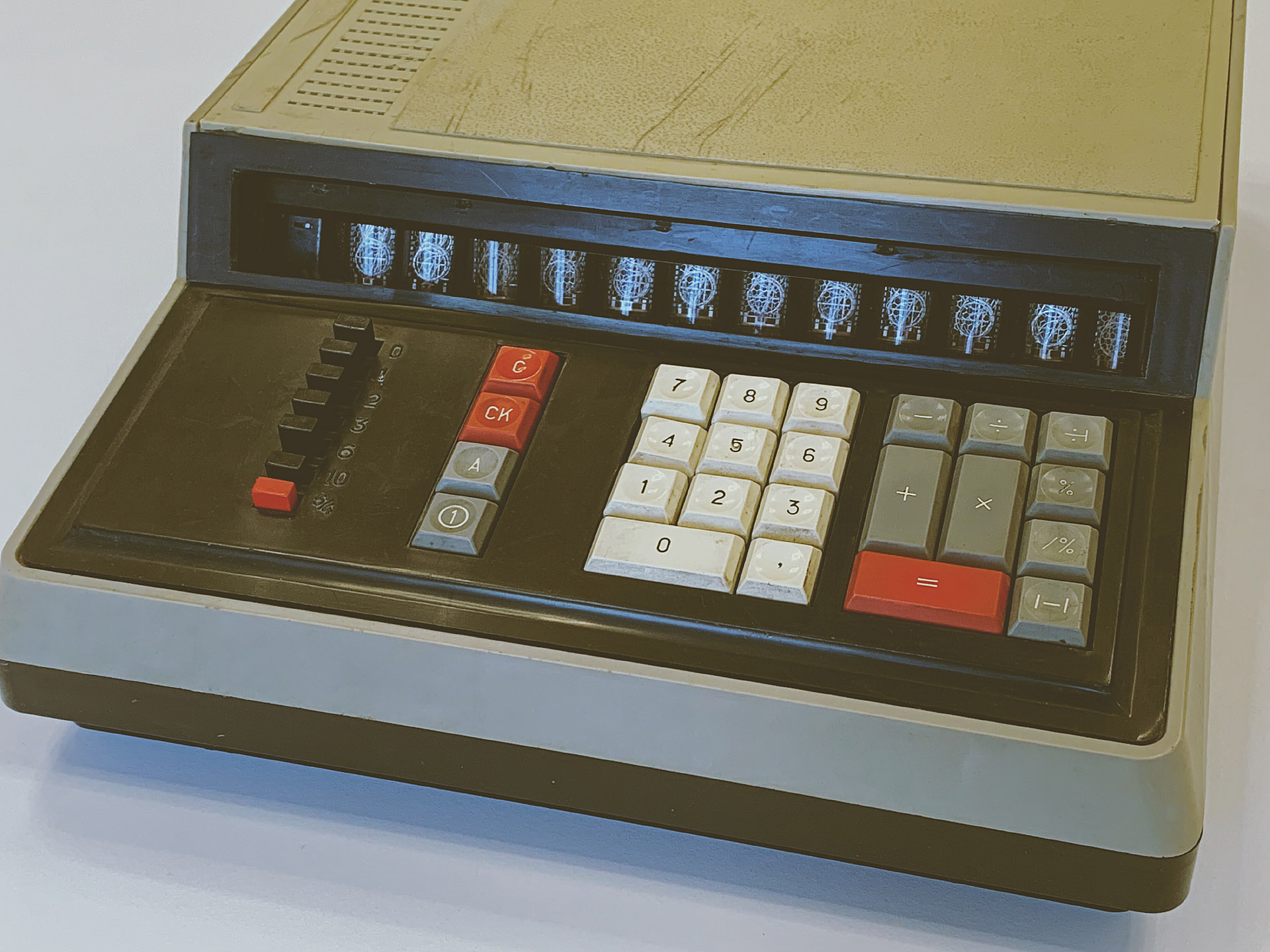
The Iskra-111m device from the DataArt Museum collection provided by Gleb Nietzman
The first in this generation of computers was the Iskra-111 and its modifications. Like the entire Iskra series, the 111th series was created at the Leningrad State Union Design and Technological Bureau (SCSTB) Accountmash and was intended for "business, planning, economic, and accounting and statistical" calculations. Until the early 1980s, Iskra-111 and its modifications were the most popular computers in the USSR. But she also had to give way to new, already really compact computing devices - microcalculators.
